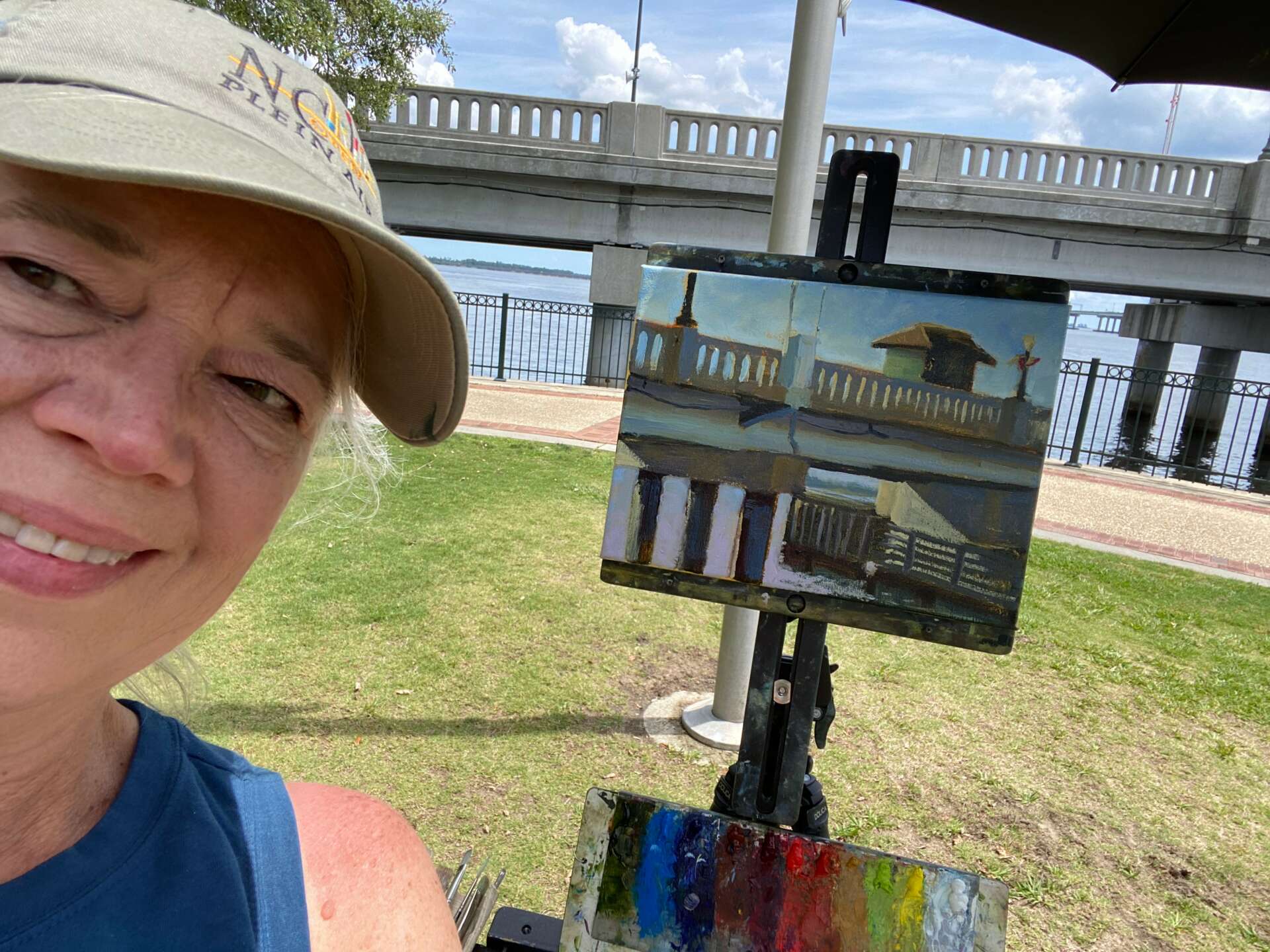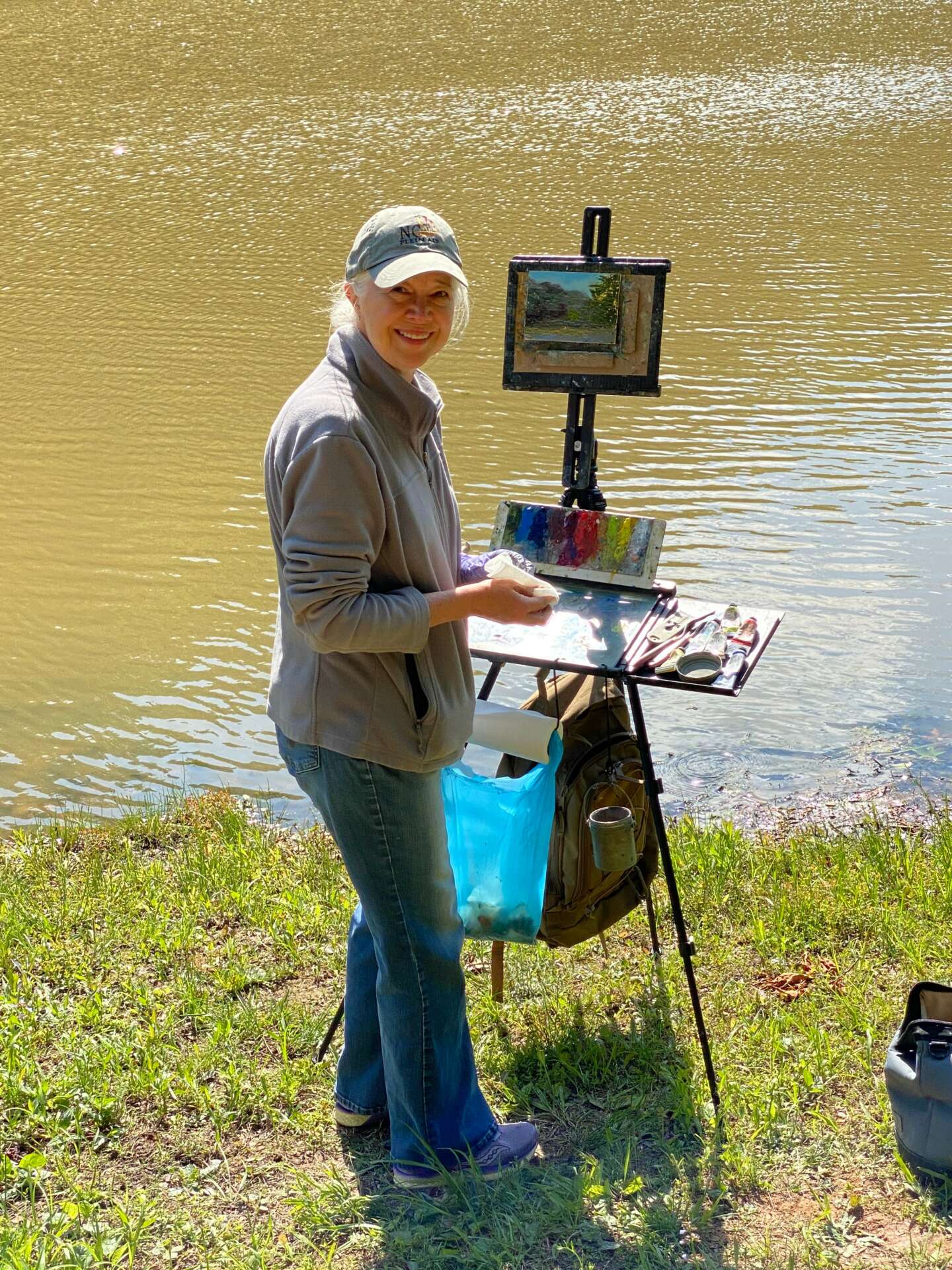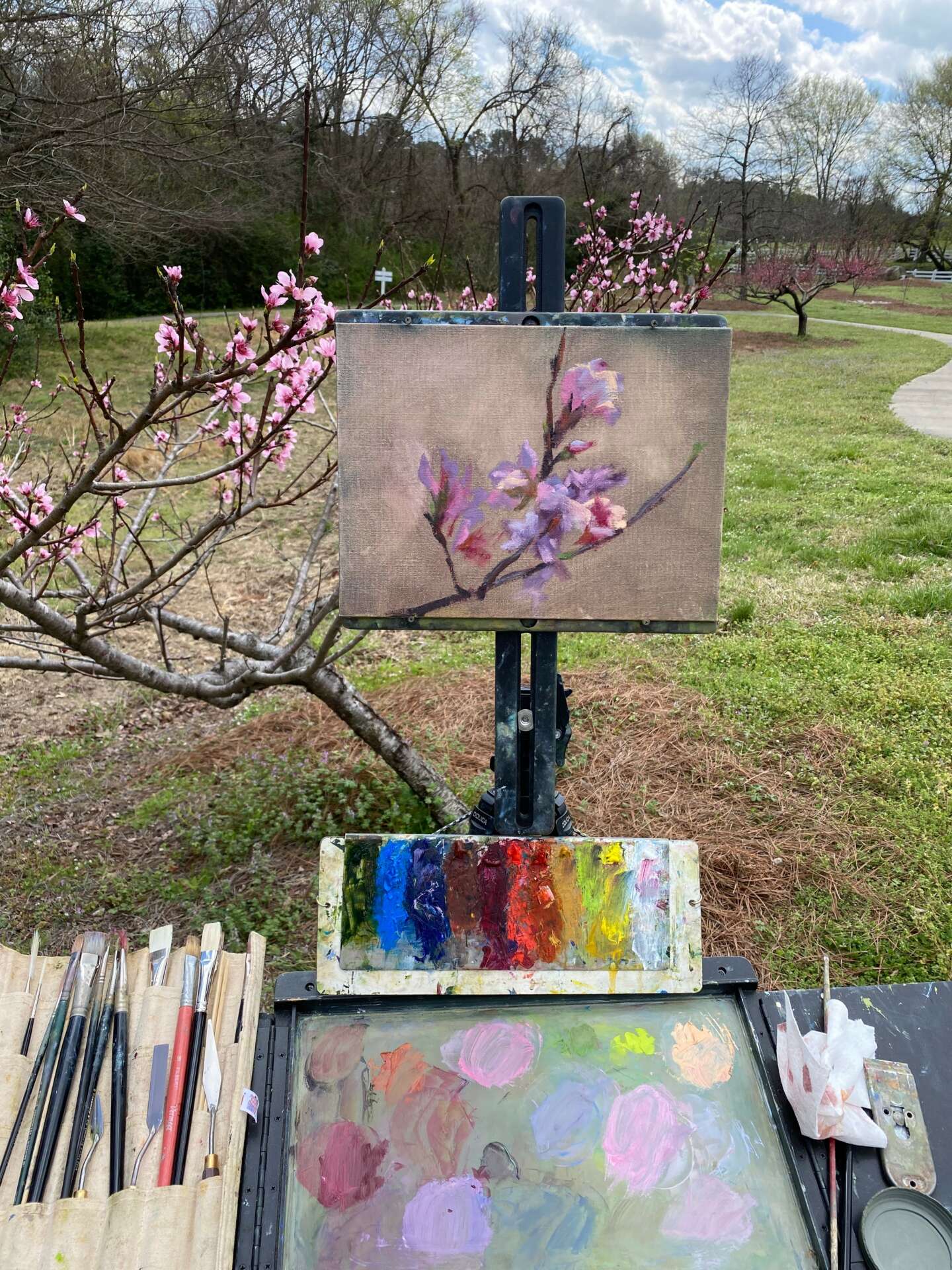We caught up with the brilliant and insightful Beth Barger a few weeks ago and have shared our conversation below.
Hi Beth, thanks for joining us today. Can you tell us about a time that your work has been misunderstood? Why do you think it happened and did any interesting insights emerge from the experience?
I don’t have any significant examples to share, but I do have lots of little ones that add up.
Upon hearing that I’m an artist, specifically an oil painter, people will often comment on how “relaxing that must be.” Speaking for myself, painting is mentally exhausting. While I’m painting, I’m in deep concentration. It’s been said that every brushstroke requires at least 7 decisions (maybe it’s 17 but I’m not a numbers person so I forget). You see, creating a piece of art is not like painting a house. In creating a painting, there are decisions to be made about the color; the value, intensity and temperature of that color; the direction of the brushstroke, the opacity of the paint, the thickness of the paint; should the edges of the mark be hard or soft, and so on. And that’s for every single brush stroke! There’s also a lot of thoughtful energy that goes into the composition of the painting, and the story it’s trying to tell.
More examples of feeling misunderstood come from when I’m out plein air painting. For those who aren’t familiar with the term plein air, that is French for “open air”, or when an artist sets up their easel outdoors and paints the scene in front of them. There are three typical reactions the general public has when coming upon plein air painters: one is walking by as if I’m not there. On one hand, I appreciate not being interrupted, but, plein air painting is still rather uncommon in the Raleigh area. Most plein air painters welcome the opportunity to chat a few minutes about what we’re doing, especially if it’s an opportunity to introduce youth to the practice. Just be aware that plein air painting is all about the sunlight, which changes fast, so it might not be a good time for a lengthy conversation. Another common reaction is to offer humor, especially offering to pose in the scene. These reactions are always good for a laugh. The most helpful reaction is to offer up support and encouragement. Invariably, people walk by during the ugly stage (every painting goes through one). Plein air painting requires a thick skin and a lot of soul baring. We’re essentially exposing our most treasured talent to people who may not understand how hard we work to learn our craft. But here’s the thing: learning to paint has an enormous learning curve. Even masters who’ve painted for 70 years still feel like they have lots more to learn. And the only way to learn is to paint miles and miles of canvas. Out of that, we’ll end up with a few paintings we like, and many we scrap.
One last misunderstanding I’ll share is what it means to be a professional artist. Not only does the artist need to create, they are often are responsible for their own bookkeeping, marketing, shipping, and everything else that goes into managing a business. Many times there are so many business requirements needing attention that it’s hard to make time to create.
So yeah, for me at least, it is not at all relaxing. But as I like to say, I’m as happy as a pig in slop. There’s nothing I’d rather do.



As always, we appreciate you sharing your insights and we’ve got a few more questions for you, but before we get to all of that can you take a minute to introduce yourself and give our readers some of your background and context?
One of my earliest art memories is making 3-D paper flowers. I was 4, my brother 3. It was late winter in Great Lakes, IL, with blustery wind and snow outside. My Mom was determined to keep us constructively occupied while we were cooped up in the house. My mother taught my brother and I how to make construction paper tulips and daffodils, which we then “planted” along the hall baseboard in a valiant effort to usher in Spring. Thus, my artistic genes were awakened and my lifelong love of art and creating with my hands was born.
From that day on, working with my hands and heart was a part of my life whether designing the yearbook cover for my high school, or teaching arts and crafts at summer camp. When it was time to declare a college major, I couldn’t fathom studying anything but art. After obtaining my BFA in Graphic Design, I spent 15 years in the profession. With the advent of desktop publishing and less opportunity to get my hands messy with design, the profession lost its luster. As a result, my career took me further away from what I was meant to do.
Finally, the time was right to jump out of the corporate world and to pursue my dream as an artist. Although I have always been an artist, it is only recently that I’ve come to realize that I create as a way to celebrate life by sharing the beauty that surrounds us every day. And the deeper I get into my painting practice, the more apparent it becomes that there’s more.
The “more” is how my paintings speak to others. How a painting of an old building evokes memories of a grandfather’s country store. How pet portraits give people a place to heal their broken heart from the loss of a beloved pet. Or how paintings of sand dunes bring back memories of joyful family vacations at the beach. It’s reactions like these that complete my paintings. My painting journey is incomplete if not shared with others.
So yes, I paint for me. But, more importantly, my paintings are for everyone else. Sharing them with you completes them.
My current medium is oil. I’ll paint any subject that has beautiful light. To further my skill, each year, I participate in at least one workshop led by a nationally recognized artist. The past year was an exciting year for me as two of my paintings were juried into national shows hosted by American Impressionist Society. This year I also started teaching oil painting to beginners.
My work is available for purchase on my website and a few galleries (listed on my website). I am also available for commissions.


What can society do to ensure an environment that’s helpful to artists and creatives?
Nurture a thriving ecosystem by investing in arts education, including visual, performing and culinary arts, through funding and participation. As we saw during the pandemic, art really is good for the soul. It nourishes us when we’re down, and inspires us when we’re receptive. Art instruction fosters creative thinking, and develops subjective problem solving skills. Visual art specifically teaches how to look and see things differently, an important skill in today’s competitive market.
One doesn’t have to dig too deep to realize how the Arts have contributed to the revitalization of so many downtown areas.


Looking back, are there any resources you wish you knew about earlier in your creative journey?
Incorporate business classes into the Art School curriculum. When I was pursuing my BFA, the curriculum did not include a single business class. It left me ill equipped to freelance or start my own business. Fortunately, I was able to pick up those skills during my corporate career, but that lack of business acumen does a disservice to graduating artists who intend to earn incomes as a full-time artists.
Although I have not taken advantage of it, Triangle Art Works offers a variety of resources on tax, legal and business matters specifically for artists. This is an relatively new, and incredible service.
There’s a lot of money to be made in the Arts, but artists need to learn how to navigate the business side in addition to honing their creative skills.
Contact Info:
- Website: https://www.bbargerart.com
- Instagram: https://www.instagram.com/bbargerart/
- Facebook: https://www.facebook.com/bbargerart
Image Credits
Image of me in overalls should be credited to Ira Tucker.


